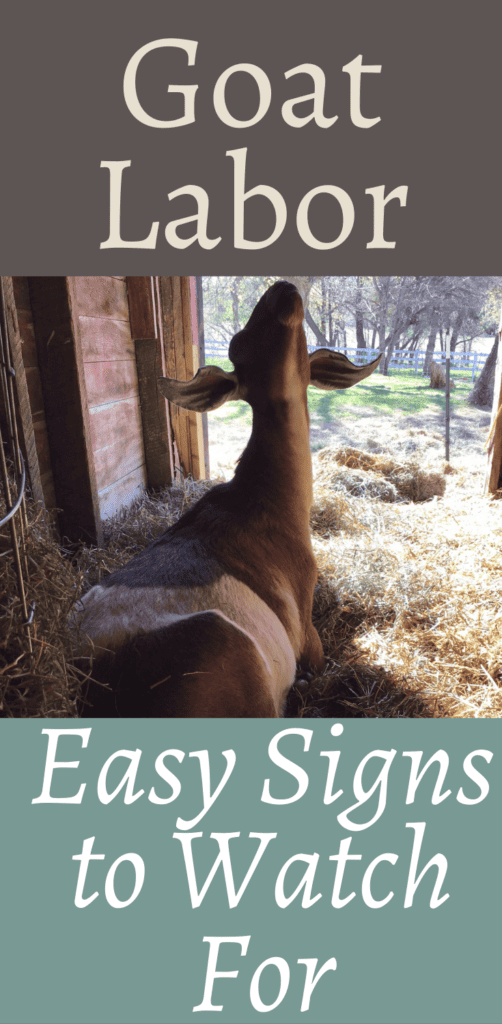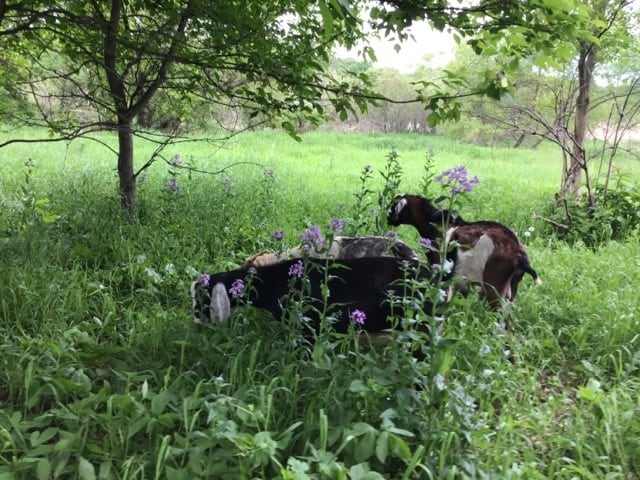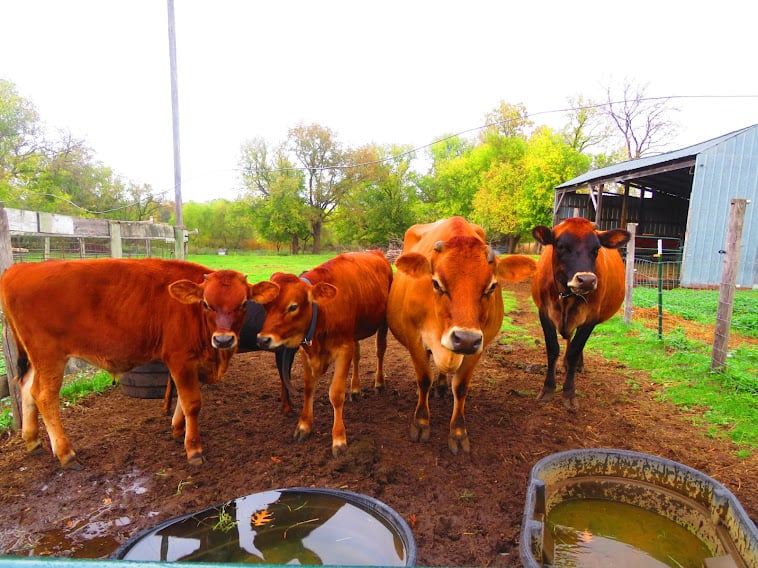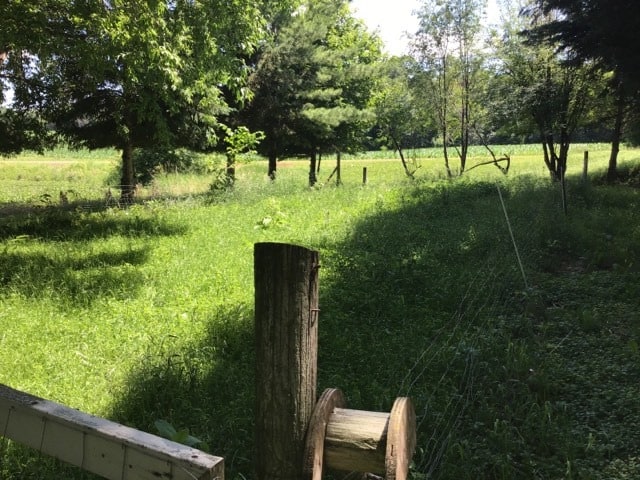Signs a Goat is in Labor
Are you expecting kids on your homestead or farm? New to goats? Watch for these signs a goat is in labor to be prepared for the new little ones!
How long is a goat pregnant for?
Goats are pregnant on average for 150 days. That works out to about five months. Just like with humans, this is more of an “estimation date” rather than a “due date”. The actual kidding date can vary by a week or so on either end. First-time mothers are more likely to go past their due date as well.
Signs a Goat is in Labor
Ligaments
A goat has ligaments that run on either side of their spine, branching off on either side of the tail. Sort of at the same angle as a peace sign, if you figure the tail is the middle of the sign.
You can easily feel these ligaments when a goat is not in labor. Feel these every day, twice a day even, as her due date gets closer.
They feel about as thick as a pencil and only have a little give.
The ligaments will start to feel loose and will disappear completely when a baby is less than 24 hours away. Check the video below for a guide as to where and how to feel them.

Vulva
Keep an eye on the doe’s vulva in the days leading up to her due date. When she is getting closer, the vulva will get puffy, kind of loose-looking, and maybe even red.
Going Off Feed
A doe soon to have her babies might start to lose interest in hay or even grain.
Discharge
A thick mucus, possibly tinged red with some blood is a sure sign labor is well under way. If your goat has discharge I would stick around.
Pawing
Does often paw at the ground before they lay to deliver babies. Maybe they are trying to fluff up a nice spot, some people say it is to check the ground for predators.
Sniffing
When a doe is very close, as in active labor, she might start sniffing around the ground as if she is looking for her kids.

Arching Back Head
A doe experiencing contractions may stretch out her neck and arch her head backwards over her body.

Lip Flipping
You may see a doe flip her upper lip upwards as she stretches out her neck. This is a sign of discomfort. Though you should note, bucks do this as well when they are in rut. Usually with males the lip flip is accompanied by some guttural sounds and other bucky behavior. Ugh. Boys are so gross.
Teeth Grinding
A goat in pain may subtly grind their teeth. You might not notice this if you don’t watch and listen closely. This isn’t always one of the signs a goat is in labor. I haven’t noticed it with my girls but others have.
Up and Down
When kids are soon to arrive a doe may get up and down several times, trying to get in what feels comfortable and right to push out her babies. As any mothers who have done natural birth probably know, this is totally normal.
How long is a goat in labor for?
If you notice the early signs of labor and catch your doe in the beginning stage, labor might last up to 12 hours. This might mean you’ve noticed she is isolating herself or that her ligaments have disappeared.
Once a goat has begun actively pushing the whole thing should wrap up in less than an hour.
If the goat seems uncomfortable, stressed, or listless for more than a half-hour with no pushing OR pushes once and stops, I would definitely do an internal inspection. We lost a doe due to a mispositioned kid last year. This year I was much more proactive about reaching in to make sure the kids could come out easily. You can read more about mispositioned goat kids and what to watch for here.
Example of Kidding Timeline
Grace’s Second Kids
When I did morning chores around 7 a.m., Grace the goat’s ligaments had pretty much disappeared. She was eating on and off but not especially interested.
I moved her to her kidding pen and checked on her every hour. Around 1:00 p.m. I noticed she was starting to have heavy discharge.
About fifteen minutes later she pushed out her first kid.
I brought her kid up to her nose and was helping clean it off (it was only about 5 degrees so I had to be hands-on).
Less than five minutes later she had pushed out her second and final kid.
About ten minutes after that she delivered the placenta.
Sweet Pea’s First Kids

Sweet Pea had a very similar time frame to her mom.
I noticed Sweet Pea’s ligaments were gone and her tail was sticking up at an unusual angle (see the video below).
I moved her into our kidding barn along with her sister for company.
Every hour I stopped in to check on her.
At noon I noticed her vulva had a tiny bit of moisture happening.
I didn’t make it down for the 1:00 p.m. check until 1:30. When I got there she had JUST pushed out her second kid. The first had clearly come within a minute or two before as he still had some sack on him and she hadn’t cleaned him up yet at all.
Her placenta was still in when I left them at 3:15. When I checked them again around 6:00 p.m. the placenta had come out.
Watch and Learn
If you want to know if your goat is about to kid, check out the video below where I follow our doe, Sweet Pea, in the days leading up to kidding. Unfortunately, I was putting my own kids down for their naps when she actually kidded, so I missed it by about 30 seconds. I do include video of Sweet Pea’s mom when she was in labor exhibiting some of the signs I wasn’t able to record with Sweet Pea.
More Goats!
Some of my most popular goat posts are on how to make a DIY Pallet Feeder and a simple Pallet Goat Shelter.
Pin it for Later








